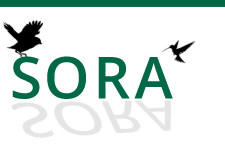Catalina Quail
Online Full Text
Thru the courtesy of Mr. Howard Wright, of Pasadena, I have had the privilege of closely examining 16 more specimens of the Catalina Island Quail. Of these, ten are males and six females. They were taken at Middle Ranch, Santa Catalina Island, February 1 to 4, 1908. The series bears out precisely the characters assigned to Lophortyx catalinensis in the original description of that form, which was based on six skins from Avalon. (See Auk XXIII, July 1906, pages 262-265.) When compared with a series of the mainland vallicola the island birds are distinguished by larger size, especially of the feet, broadness of terminal barring on the posterior lower surface, and broadness of shaft-streaks on lower tail-coverts and flanks. An additional character which shows up in the larger series is the averaging more intense and extensive chestnut patch on the hind chest, in the male, of course. This does not seem to be due to the different "make'' of the skins. An examination of individual variation in the two series shows that any one character alone is not diagnostic of every single individual. For instance, a small-footed island bird can be duplicated in that respect by an extra large-footed mainland bird. But at the same time the barring and streaking of the former renders it easily recognizable. Then in the matter of barring on the lower surface, a mainland female appears as heavily marked as the average island female. But at the same time the former has a decidedly shorter wing and weaker foot. It is therefore evident that there is a mergence of separate characters thru individual variation; and according to the criterion now apparently most popular, the island form would be given a trinomial appellation. The binomial, however, appears to me most useful, as it signifies complete isolation because of the intervention of a barrier.
Pasadena,California.
Creative Commons License
Recommended Citation
Grinnell, J.
(1908)
"Catalina Quail,"
Condor: Vol. 10
:
Iss.
2
, Article 27.
Available at:
https://digitalcommons.usf.edu/condor/vol10/iss2/27

